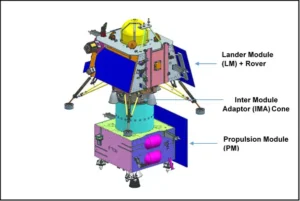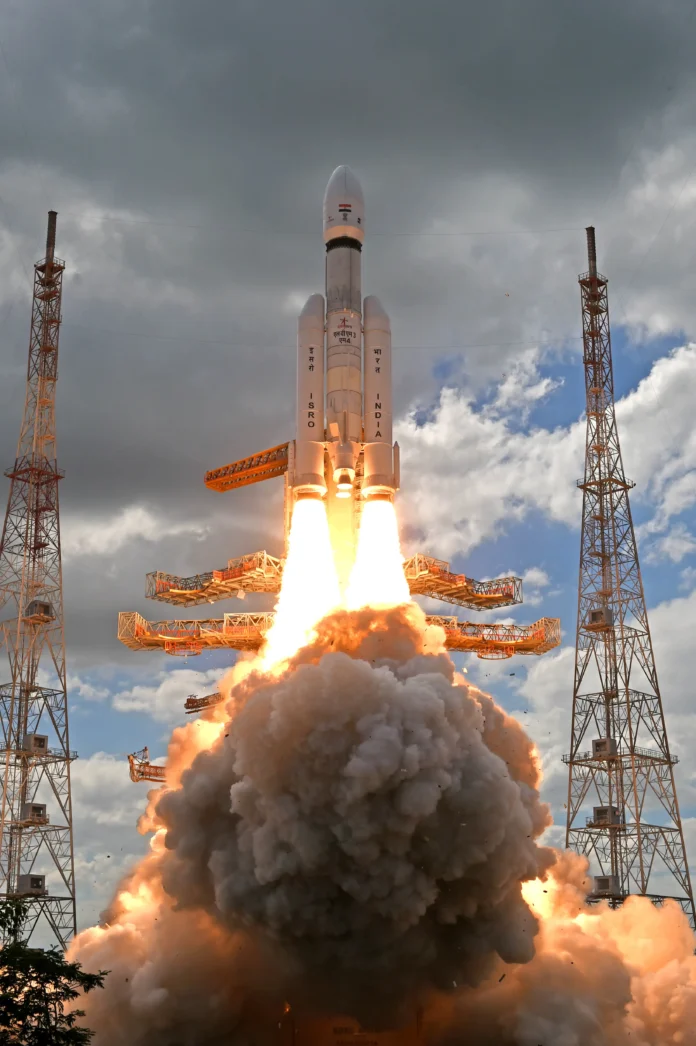Introduction
 Chandrayaan-3, the third lunar mission by the Indian Space Research Organisation (ISRO), stands as a testament to India’s relentless pursuit of space exploration. Building on the successes of its predecessors, Chandrayaan-1 and Chandrayaan-2, this ambitious project aims to further enhance India’s scientific understanding of the Moon’s surface and pave the way for potential future lunar missions.
Chandrayaan-3, the third lunar mission by the Indian Space Research Organisation (ISRO), stands as a testament to India’s relentless pursuit of space exploration. Building on the successes of its predecessors, Chandrayaan-1 and Chandrayaan-2, this ambitious project aims to further enhance India’s scientific understanding of the Moon’s surface and pave the way for potential future lunar missions.
Background

India’s space program has come a long way since the launch of its first lunar probe, Chandrayaan-1, in 2008. The mission achieved remarkable success, particularly with the discovery of water molecules on the lunar surface. Following this triumph, Chandrayaan-2 was launched in 2019, comprising both an orbiter and a lander-rover combination. Despite the Vikram lander’s unfortunate crash during its descent, the orbiter continued to operate successfully and provide valuable data.
Chandrayaan-3: Objectives and Key Components
Chandrayaan-3, announced after the partial success of Chandrayaan-2, aims to address the setbacks of its predecessor while building upon its achievements. The primary objectives of the mission are:
1. Lander and Rover
Similar to Chandrayaan-2, Chandrayaan-3 will comprise a lander and a rover designed to explore the lunar surface. The lander will be responsible for a soft landing on the Moon, and the rover will be equipped with advanced scientific instruments to conduct in-situ experiments.
2. Site Selection:
One of the lessons learned from Chandrayaan-2 is the importance of meticulous site selection for the landing. ISRO scientists will undoubtedly apply these learnings to choose a suitable landing site with minimal obstacles and optimal scientific potential.
3. Scientific Research:
Chandrayaan-3 will carry advanced instruments to analyze the lunar soil and study the mineral composition of the Moon’s surface. This research will help scientists gain deeper insights into the Moon’s geological history and evolution.
4. Technology Demonstration:
The mission will also serve as a platform to demonstrate and test new technologies that can be utilized in future lunar and space exploration endeavors.
5. Soft Landing:
The most crucial objective of Chandrayaan-3 is to successfully achieve a soft landing on the Moon’s surface. Learning from the experiences of Chandrayaan-2, ISRO has meticulously planned and fine-tuned the landing sequence to ensure a higher chance of success.
6. Lunar Topography and Mineralogy:
Chandrayaan-3 will carry sophisticated instruments to study the Moon’s topography and mineralogy. By understanding the composition of the lunar surface, scientists hope to gain insights into the Moon’s geological history and its relationship with Earth.
7. Water Ice Mapping:
Building on the discoveries of Chandrayaan-1, Chandrayaan-3 aims to further investigate and map the distribution of water ice on the Moon. Water on the Moon is a valuable resource for future space missions, including the establishment of lunar bases and fuel production.
8. Helium-3 Exploration:
Chandrayaan-3 is also equipped to analyze the presence of helium-3 on the Moon’s surface. Helium-3 is a rare isotope with potential applications in nuclear fusion, and the Moon is believed to have significant deposits of this valuable resource.
Chandrayaan-3: Key Technology
- Altimeters: Laser & RF based Altimeters
- Velocimeters: Laser Doppler Velocimeter & Lander Horizontal Velocity Camera
- Inertial Measurement: Laser Gyro based Inertial referencing and Accelerometer package
- Propulsion System: 800N Throttleable Liquid Engines, 58N attitude thrusters & Throttleable Engine Control Electronics
- Navigation, Guidance & Control (NGC): Powered Descent Trajectory design and associate software elements
- Hazard Detection and Avoidance: Lander Hazard Detection & Avoidance Camera and Processing Algorithm
- Landing Leg Mechanism.
Chandrayaan-3: Key Testing
To demonstrate the above said advanced technologies in earth conditions, several Lander special tests have been planned and carried out successfully viz.
- Integrated Cold Test – For the demonstration of Integrated Sensors & Navigation performance test using helicopter as test platform.
- Integrated Hot test – For the demonstration of closed loop performance test with sensors, actuators and NGC using Tower crane as test platform.
- Lander Leg mechanism performance test on a lunar simulant test bed simulating different touch down conditions.
Challenges and Learnings from Previous Missions

Space exploration is inherently risky and challenging, and Chandrayaan-3 is no exception. ISRO has undoubtedly learned valuable lessons from Chandrayaan-2, and they are working diligently to address potential issues and ensure a successful mission. The success of Chandrayaan-3 will not only mark India’s progress in space exploration but will also inspire future generations of scientists, engineers, and researchers. The mission aims to push the boundaries of human knowledge and lay the groundwork for more ambitious space endeavors. The path to space exploration is fraught with challenges, and India’s previous lunar missions have provided invaluable insights and experiences. Chandrayaan-2’s partial success highlighted the complexities of lunar landings and the need for precise engineering during the descent phase. The scientists and engineers at ISRO have been diligently working to address these challenges and improve the reliability of the landing process for Chandrayaan-3.
ISRO’s Progress and Collaborations
ISRO has been making steady progress on Chandrayaan-3 since its announcement. The organization has been conducting rigorous tests and simulations to ensure the mission’s success. Moreover, ISRO has also benefited from international collaborations, with experts from various space agencies offering their expertise and advice.
Expected Impact
Chandrayaan-3 represents India’s steadfast commitment to space exploration and scientific discovery. The mission is expected to contribute significantly to our understanding of the Moon’s geology and provide crucial data that could aid in planning future lunar missions. Additionally, the technical advancements and knowledge gained from Chandrayaan-3 will serve as a stepping stone for more ambitious space endeavors.
Conclusion
Chandrayaan-3 is a testament to India’s determination to advance its space program and expand the frontiers of lunar exploration. With its renewed focus on site selection, improved technology, and valuable learnings from previous missions, Chandrayaan-3 is poised to make significant strides in lunar research and cement India’s position as a prominent player in the global space community. As the mission takes flight, the world eagerly awaits the scientific treasures it will bring back and the potential it holds for future missions, not just to the Moon but beyond.

